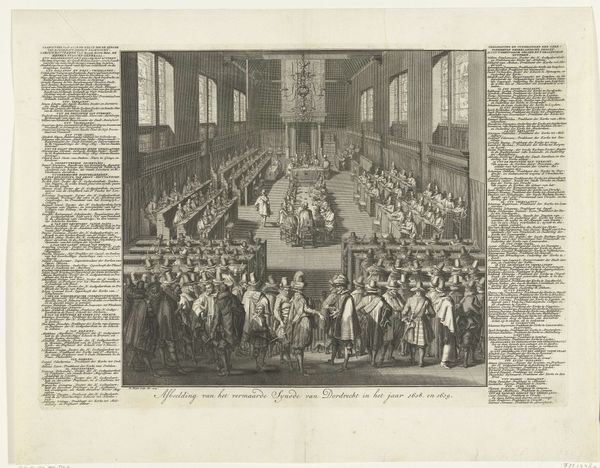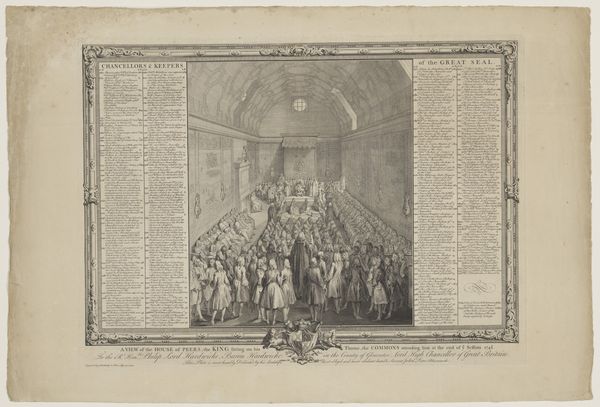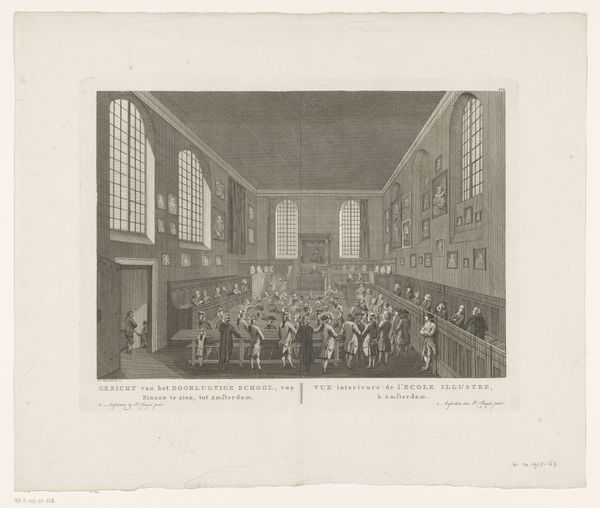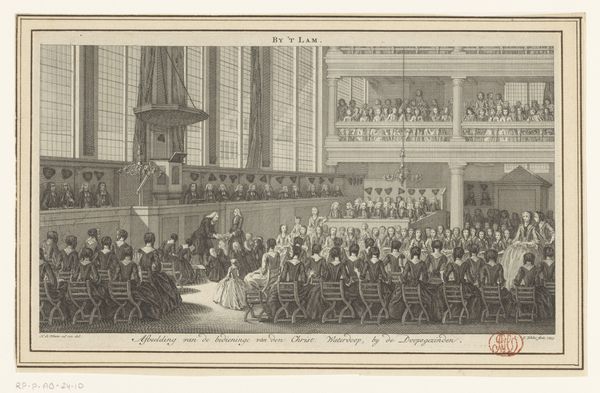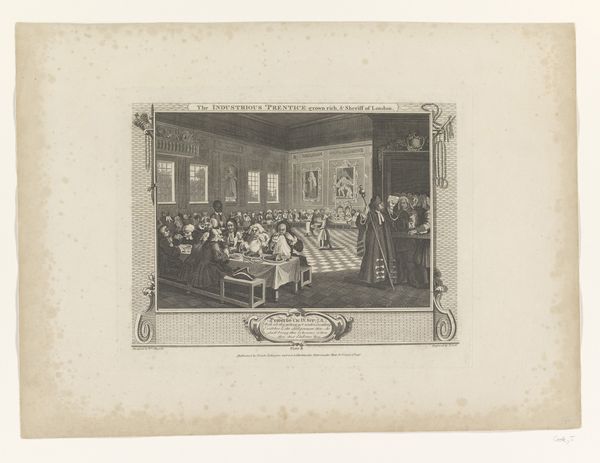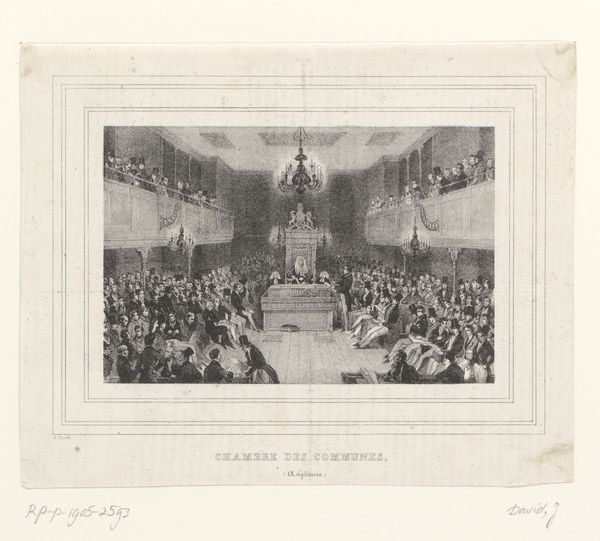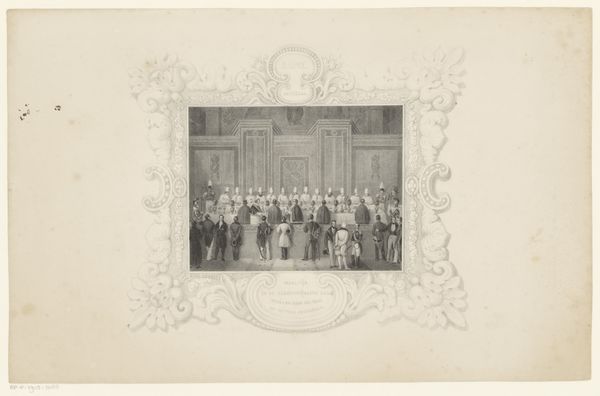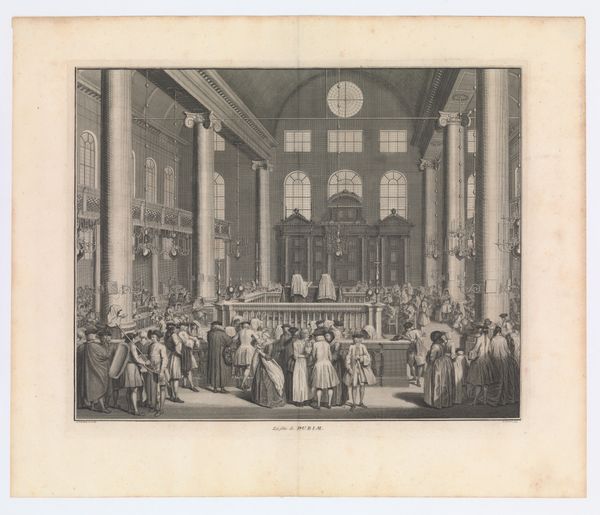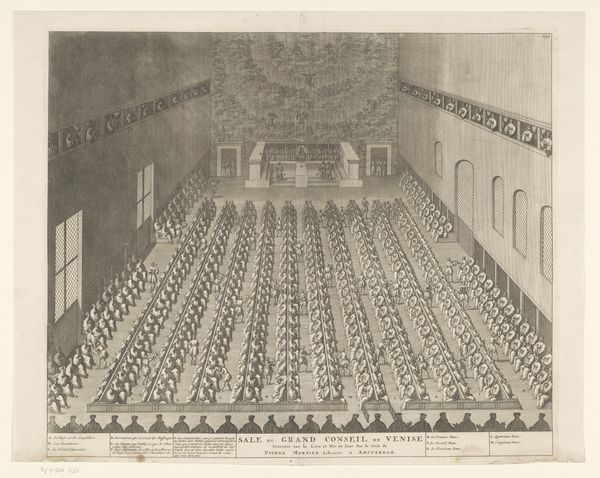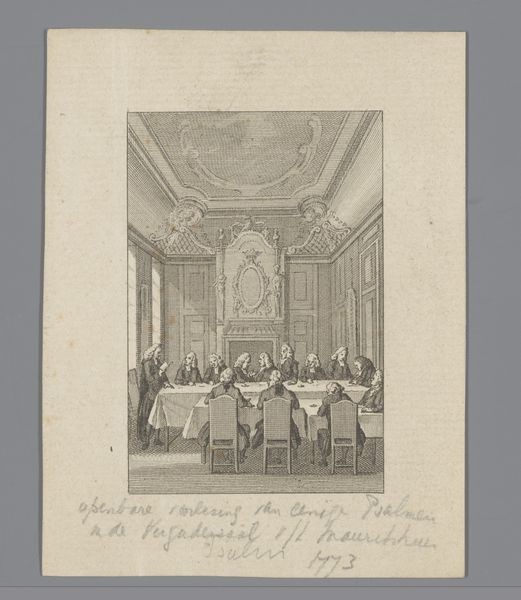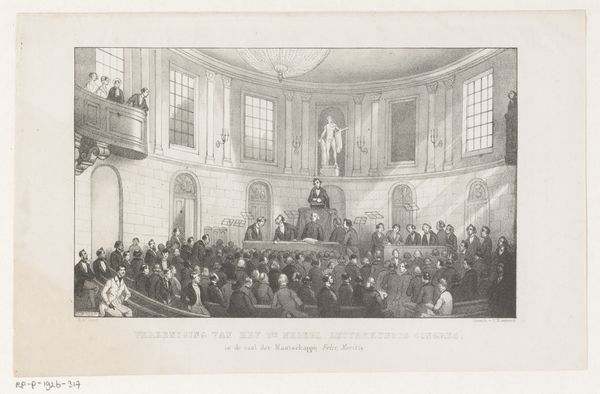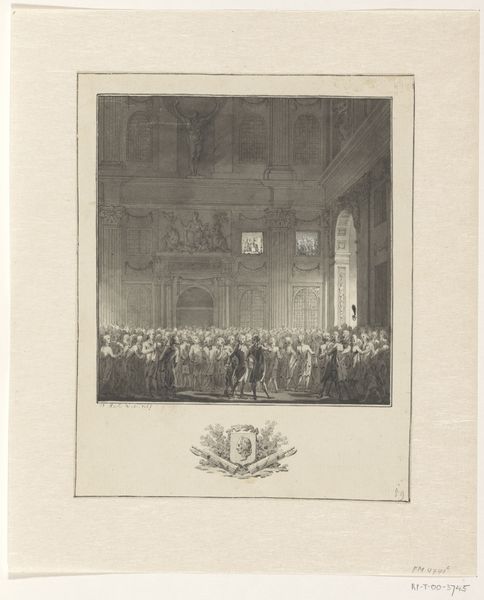
print, etching, paper, engraving
#
portrait
#
baroque
#
ink paper printed
# print
#
etching
#
paper
#
classicism
#
genre-painting
#
history-painting
#
academic-art
#
engraving
Dimensions: height 474 mm, width 646 mm
Copyright: Rijks Museum: Open Domain
Curator: This engraving by John Pine, dating to around 1749, depicts the British House of Commons in session. Notice how meticulously he details the scene using ink on paper. It's fascinating to observe the visual language used to convey the workings of power. Editor: It's so dense, isn't it? Like an overstuffed room crammed into a neat rectangle. All those men…they seem almost like a flock of birds taking flight or perhaps it’s all those feathered hats they are wearing, giving the appearance that the room is taking flight! The lighting is interesting; everything appears so pale and stark. Curator: Precisely. The choice of etching and engraving, allows Pine to produce fine lines and precise details that illustrate social structures and decorum in eighteenth-century England. It really is as much about depicting the physical space as it is about representing an entire societal framework. Consider the materials: paper, ink, and the very act of printing allowed for wide distribution of the image. This brought political theater and the powerful decision-making within closer reach of the wider public and helped contribute to shaping opinions and discourses. Editor: Yes, one can appreciate the power of replication and the spreading of images for greater political awareness or... to control a message! I keep imagining what voices that room must have held... imagine the debates and grandstanding! Looking at each row of faces lined up makes me feel a kind of ordered chaos and the individual almost becomes inconsequential. Curator: A crucial detail is the bordering lists containing the names of the House of Commons speakers: this points to a desire for accountability and recognition. And, to your earlier comment, consider how Pine positions the viewer in the engraving. He doesn't place us amongst the Parliament members but as objective observers looking in, removed, considering the machinations of the state. Editor: In other words, viewers become spectators in this game of governance. Almost as though Pine suggests a level of necessary separation of spectator versus participator for a functional society? Makes you wonder if it still rings true. Curator: The materiality and manufacturing of this image offers insight into social hierarchy, civic duty, and artistic production. I'd say we have both brought some perspectives here to help visitors engage. Editor: Yes. Looking back, my spontaneous reading feels too much, or too fanciful. Let us hope we've left visitors something to think about regarding power and its many presentations.
Comments
No comments
Be the first to comment and join the conversation on the ultimate creative platform.
